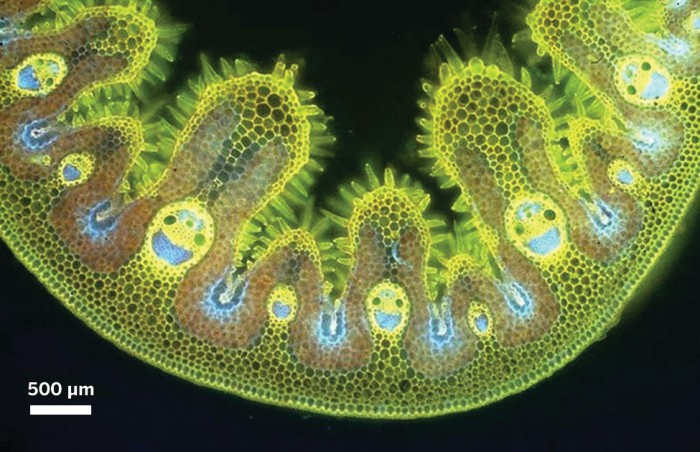At first glance, a field of grass may seem simple—an ordinary feature of our landscapes. But when observed under a microscope, these modest blades reveal an extraordinary detail: tiny smile-like shapes etched into their surface. While they may resemble joyful expressions, these “smiles” are a product not of emotion, but of nature’s complex structural design.

These curved patterns emerge from the epidermal cells, which form the outermost layer of the grass blade. As the plant grows, these cells bend and contour in response to environmental pressures. The result is a series of repeating curves, shaped by the interplay of cellular pressure, wall flexibility, and hydration. Under specific magnification and lighting, this naturally occurring curvature creates the illusion of smiling faces—an unintentional visual phenomenon.
Scientifically, this phenomenon arises from the way plant cells maintain their rigidity. Inside each cell, water pressure known as turgor pressure pushes outward against the cell walls, creating tension and subtle shaping. The epidermal layer is particularly flexible, allowing it to fold, stretch, and adapt as the blade grows or reacts to external stimuli like wind, heat, or moisture.
These small yet powerful adaptations serve practical purposes. They help the grass retain moisture, reduce physical damage, and protect against microbial invasions. The flexible surface also allows the blade to bend without breaking, a crucial survival trait in environments exposed to frequent disturbances.
Though the smile-shaped formations are coincidental, they reflect a deeper truth: nature often crafts patterns that are both functional and aesthetically remarkable. These faces are not signs of emotion, but rather side effects of how the biological structure prioritizes survival. Still, the charm of seeing a “smile” in something as humble as grass reminds us of how intricate and layered even the most common elements of life can be.
This microstructural behavior of plants underscores an important principle in biology—form follows function. The same way feathers evolved for flight and lungs for gas exchange, these microscopic curves reflect the plant’s ability to manage water and mechanical stress. And in the process, they also create fleeting glimpses of beauty.
Beyond their aesthetic appeal, discoveries like this enrich our understanding of the microscopic world and offer insight into biomimicry—the design of materials and technologies inspired by natural processes. Engineers and scientists continually look to nature for solutions, and the resilience and flexibility of plant epidermal structures could inspire everything from smart materials to water-retaining surfaces.
Ultimately, these smiling patterns are more than just curiosities. They’re evidence of how biology solves problems elegantly and, occasionally, with an unexpected sense of visual delight.Source: Journal of Experimental Botany / Plant Cell Biology Division
